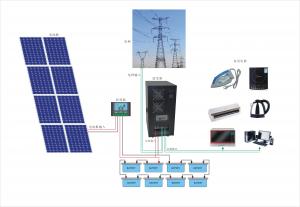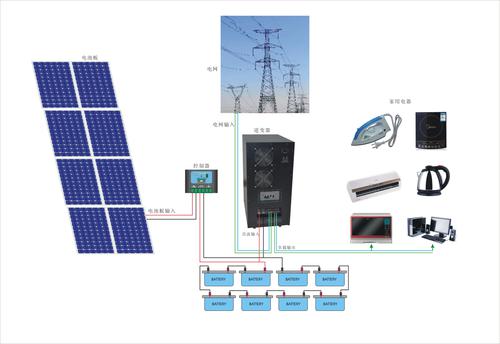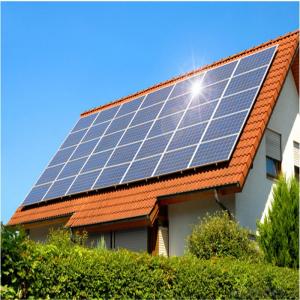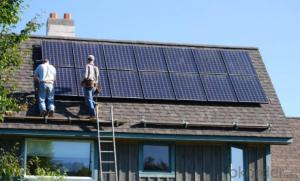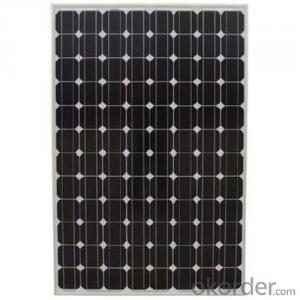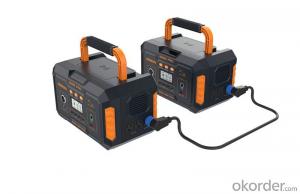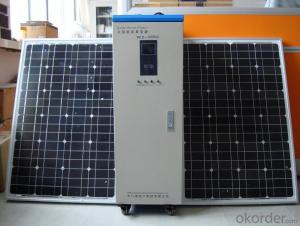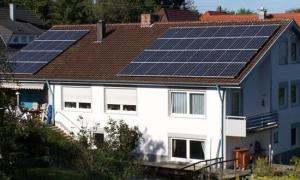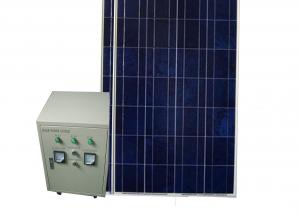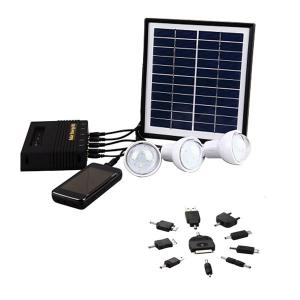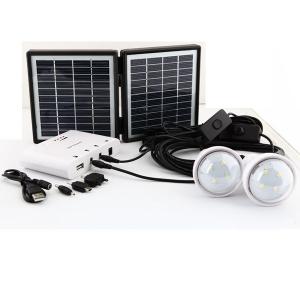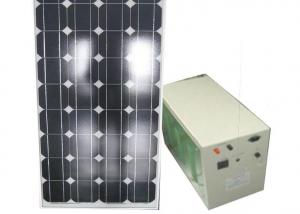Greentech Solar Energy Systems:1000W Solar Power System for Home Use
- Loading Port:
- Guangzhou
- Payment Terms:
- TT OR LC
- Min Order Qty:
- -
- Supply Capability:
- 1000sets set/month
OKorder Service Pledge
OKorder Financial Service
You Might Also Like
Solar power system 1000W for home use
Features
Solar cell modules
It converts solar energy into electrical energy and the frames support solar panels.
Charge controller
It supplies direct current regulated from solar modules to the battery or inverter.
Stand-Alone Inverter
It supplies alternative current to loads after rectifying the direct current.
Battery
It supplies the electric power to loads through inverter in case the electric power generated from solar modules is in short supply or at night.
Complete 24V/1000W stand alone solar systems
5×200w poly solar panels//1×24V/50A solar charge controller//1×48V/3000W pure sine wave
inverter//4×12V/200Ah lead acid batteries//ground mounting brackets//50m PV cables for solar
panels connection//dual connectors for solar panels connection//connection cables for batteries.
average produce 6kwh power each day!!!
| 12V/200W Poly-crystalline Solar Panels | ||||||||
| Model: 200P Maximum power:200W Maximum power voltage:35V Maximum power current:5.71A Open circuit voltage:42.48V Short circuit current:6.29A Dimension:1350mm×1000mm×45mm Weight: 17.5kg Solar cells:48pieces(6×8)poly solar cells156mm×156mm;Grade A; CE certification Maximum systems voltage: 1000V | 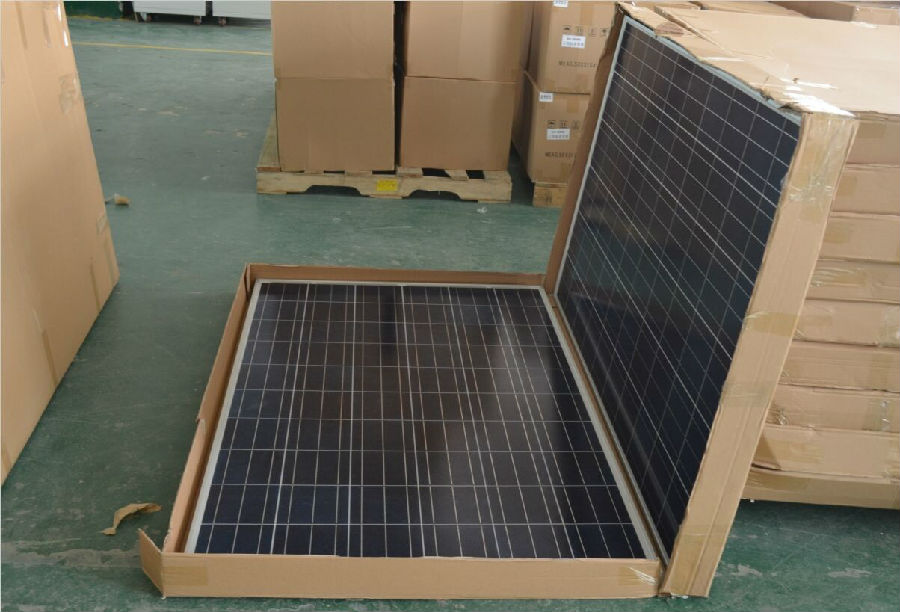 | |||||||
| | ||||||||
| | ||||||||
| | ||||||||
| | ||||||||
Wiring of solar panels: 1 panels in series, 5 strings in parallel | ||||||||
| 24V/50A solar charge controller | ||||||||
| Model:2450 Rated voltage: 24V Rated current: 50A Over-voltage protection 34V Over-discharge recover voltage: 25V working temperature: -20℃~45℃ Dimension: 184mm×110mm×57mm Weight: 0.66kg Features: battery switch | 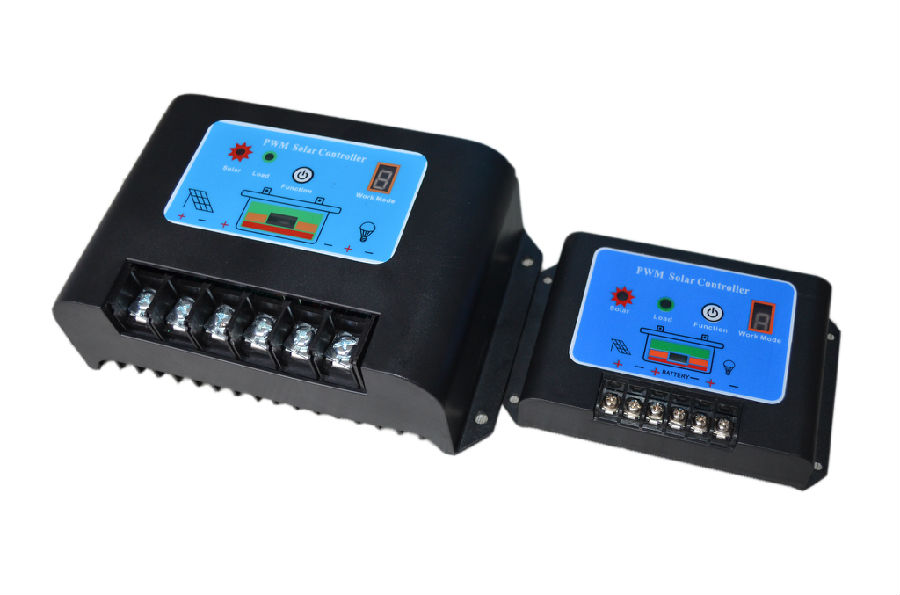 | |||||||
| | ||||||||
| | ||||||||
| | ||||||||
| | ||||||||
| | ||||||||
| Wiring of solar charge controller: firstly connect solar charge controller with battery bank, then connect solar charge controller with solar panels array, at last connect solar charge controller with loads or pure sine wave inverter | ||||||||
| 48V/3000W Pure Sine Wave Inverter | ||||||||
| Model:10224 Rated input voltage:DC24V Input voltage range:75V~125V OR 145V~275V Output voltage:AC210V~AC240V Rated output power:1000W Maximum output power:2000W Output wave form: pure sine wave Dimension:396mm×190mm×240mm Weight:14kg. Working temperature: 0℃~40℃. Battery low voltage shutdown: DC21V | 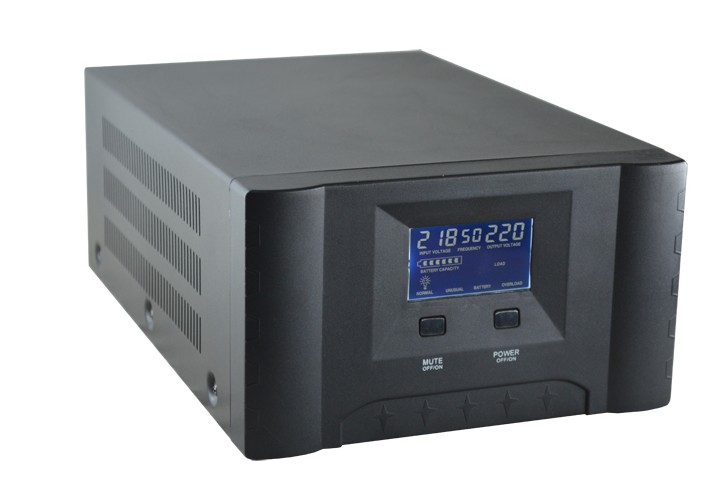 | |||||||
| | ||||||||
| | ||||||||
| | ||||||||
| | ||||||||
| 12V/200Ah deep cycle battery | ||||||||
| Deep cycle batteries in our stand alone solar systems have 2000 time charging-discharging cycle at 50% DOD. Gel batteries have better performance than lead acid batteries under cold temperature. besides, these battery are free-maintenance. |
| Package&shipment terms | |||||||||
| 1,We would pack all components into one plywood case and put much foam inside of plywood case, this packing way can make all components stand long distance transportation. 2,Because batteries are a kind of very heavy components and can't be allowed to transport by air, we have to choose sea transportation. though sea transportation would take more days to arrive, however you can save much postage. 3.We would ship the system to any bigger port near to customers, customers need to go to the port and pick up the system. |
- Q: What is the average payback period for a solar energy system?
- The average payback period for a solar energy system varies depending on various factors such as the system's size, location, installation costs, energy usage, and available incentives. However, on average, a residential solar energy system can pay for itself within 6 to 10 years, while commercial systems may have a payback period of 4 to 8 years. It's important to note that with advancements in technology and decreasing installation costs, the payback period for solar systems is continually decreasing, making it a more financially viable option for many.
- Q: Can a solar energy system be installed in a residential community with homeowners' association rules?
- Solar energy systems can indeed be installed in residential communities that have homeowners' association (HOA) rules. However, the regulations pertaining to solar panel installation can vary depending on the specific HOA. In certain cases, HOAs may impose restrictions on the type, size, or placement of solar panels. To proceed with the installation of a solar energy system in a residential community governed by HOA rules, homeowners would typically need to adhere to a set of guidelines or obtain approval from the HOA. This process may involve submitting an application, providing detailed plans and specifications of the system, and acquiring the necessary permits. Many HOAs have recognized the advantages of solar energy and have adopted supportive guidelines for solar panel installations. Some HOAs have even revised their rules to facilitate the installation of solar energy systems for homeowners. It is crucial for homeowners to carefully review the specific rules and guidelines of their HOA and establish communication with the association to fully comprehend the requirements and obtain the necessary approvals. In summary, while it is feasible to install a solar energy system in a residential community governed by HOA rules, it is vital to thoroughly examine the specific guidelines and secure approval from the HOA to ensure compliance and a seamless installation process.
- Q: What are the financial benefits of installing a solar energy system?
- The financial benefits of installing a solar energy system include reduced electricity bills as solar power generates free electricity from sunlight, potential savings on energy costs in the long run, decreased reliance on grid power and utility companies, potential eligibility for government incentives and tax credits, increased property value, and the possibility of selling excess energy back to the grid for additional income.
- Q: How do solar energy systems impact the value of a property?
- Solar energy systems can have a positive impact on the value of a property in several ways. Firstly, having a solar energy system installed can significantly reduce or even eliminate electricity bills, which is an attractive feature for potential buyers. This can result in substantial savings over time, making the property more appealing and financially beneficial. Secondly, solar energy systems are viewed as a sustainable and environmentally friendly solution. As the demand for clean energy continues to rise, properties with solar panels are seen as more desirable and forward-thinking. Buyers are increasingly looking for eco-friendly features, and having a solar energy system can set a property apart from others on the market. Additionally, solar energy systems typically come with government incentives and tax credits, which can further enhance the value of a property. These financial incentives can offset the initial cost of installing the system and provide additional savings for the homeowner, making the property more attractive to buyers. Moreover, solar energy systems can also contribute to a property's resilience during power outages or grid failures. With a backup battery system, homeowners can continue to generate and store electricity, ensuring a reliable power supply. This can be a valuable asset in areas prone to blackouts or natural disasters, increasing the desirability and value of the property. Lastly, studies have shown that homes with solar energy systems tend to sell faster and at a higher price compared to homes without them. Research conducted by the U.S. Department of Energy's Lawrence Berkeley National Laboratory found that solar homes sold for an average of 4.1% more than non-solar homes. This demonstrates the positive impact that solar energy systems can have on property value. In conclusion, solar energy systems can significantly impact the value of a property by reducing electricity bills, showcasing sustainability, offering financial incentives, providing backup power, and increasing the speed and price of property sales. As renewable energy becomes more mainstream, solar energy systems are increasingly seen as a valuable and desirable asset in the real estate market.
- Q: Can solar energy systems be used in powering scientific research vessels or marine laboratories?
- Indeed, it is possible to utilize solar energy systems for the purpose of powering scientific research vessels or marine laboratories. Solar energy, being a renewable and sustainable power source, can be harnessed through the utilization of photovoltaic panels or solar thermal collectors. The energy requirements of research vessels and marine laboratories are substantial, given the nature of their operations which involve scientific experiments, data collection, and analysis. These activities usually involve the use of equipment like computers, sensors, and laboratory instruments, which necessitate a continuous and dependable power supply. To address this need, solar energy systems can be installed on said vessels or laboratories, providing a clean and efficient source of electricity. Through the conversion of sunlight into electricity via photovoltaic panels, the various equipment and systems on board can be powered. Moreover, any excess energy produced by the solar panels can be stored in batteries to be utilized during periods of decreased sunlight or at night. The utilization of solar energy in these marine environments presents numerous advantages. Firstly, it diminishes reliance on fossil fuels and diminishes the carbon footprint associated with conventional methods of power generation. This is particularly vital in the context of scientific research as it aligns with the principles of environmental sustainability and conservation. Secondly, solar energy systems offer a reliable and autonomous power source. Research vessels and marine laboratories often operate in remote or secluded locations where access to traditional power grids may be limited or non-existent. By harnessing solar energy, these vessels and facilities can generate their own electricity, enabling them to continue their research activities without depending on external power sources. Lastly, solar energy systems necessitate minimal maintenance and have a lengthy lifespan. Once installed, they require minimal upkeep and are capable of withstanding the harsh marine environment. This makes them highly suitable for use in research vessels or marine laboratories, where downtime and maintenance issues can be disruptive to ongoing scientific projects. In conclusion, there is no doubt that solar energy systems can be effectively employed to power scientific research vessels or marine laboratories. They offer a sustainable, reliable, and autonomous source of electricity, thereby reducing the carbon footprint and ensuring uninterrupted research activities, even in remote locations.
- Q: How do solar energy systems impact the aesthetics of a building?
- Solar energy systems can have both positive and negative impacts on the aesthetics of a building. On the positive side, solar panels can be designed to blend in with the architecture and become an attractive addition to the building. They can enhance the modern and eco-friendly image of a structure, showcasing the owner's commitment to sustainability. However, some people may find solar panels visually unappealing or believe they disrupt the traditional aesthetics of a building. It ultimately depends on the design and integration of the solar energy system, as well as personal preferences and the surrounding environment.
- Q: Can solar energy systems be used in areas with limited access to the grid?
- Yes, solar energy systems can be used in areas with limited access to the grid. Since solar energy relies on capturing sunlight and converting it into electricity, it can be harnessed anywhere there is ample sunlight, making it a viable solution for off-grid locations. With the installation of solar panels and batteries to store excess energy, these systems can provide reliable and sustainable electricity to areas without grid connections, improving access to power in remote or underdeveloped regions.
- Q: Can solar energy systems be installed in areas with extreme weather conditions?
- Solar energy systems can indeed be installed in regions with harsh weather conditions. Though extreme heat, cold, wind, or snow may potentially affect the efficiency of solar energy systems, modern solar technology has been engineered to endure such conditions. Solar panels are constructed using sturdy materials capable of withstanding high temperatures, freezing temperatures, and strong winds. Furthermore, solar panels undergo rigorous testing and certification to meet industry standards for durability and performance in various weather conditions. In areas with extreme heat, solar panels are designed to dissipate heat and maintain optimal efficiency. They are thoroughly tested to ensure they can sustain high temperatures without any damage or significant performance loss. Similarly, solar panels in areas with extreme cold are built to withstand freezing temperatures and can even generate electricity in snowy conditions. Some solar panels feature anti-reflective coatings to absorb more sunlight and expedite snow melting. Moreover, solar energy systems are commonly installed with robust mounting systems and structures capable of enduring strong winds or storms. These systems are engineered to ensure that solar panels remain securely attached to roofs or ground mounts, even in hurricane-prone or high-wind regions. Though the performance of solar energy systems may be slightly affected by extreme weather conditions, proper installation and design enable solar panels to still generate electricity and provide a dependable source of renewable energy in such areas. It is advisable to seek guidance from experienced solar installers or engineers who can evaluate the specific weather conditions of a given region and develop a solar energy system capable of withstanding those conditions.
- Q: What is the role of monitoring systems in a solar energy system?
- The role of monitoring systems in a solar energy system is to gather and analyze data related to the performance and efficiency of the system. These systems play a crucial role in ensuring that the solar energy system is functioning optimally, and any potential issues or inefficiencies are identified and addressed promptly. Monitoring systems typically include sensors and meters that measure various parameters such as solar radiation, energy production, temperature, and voltage. This data is collected in real-time and can be accessed remotely, allowing system owners, operators, and maintenance personnel to monitor the system's performance from anywhere. By collecting and analyzing this data, monitoring systems provide valuable insights into the overall health and functionality of the solar energy system. They can detect and alert users about any malfunctions, such as faulty panels, inverters, or wiring, enabling prompt maintenance or repairs. This proactive approach helps minimize downtime and maximize energy production, ensuring the system operates at its full potential. Furthermore, monitoring systems also help in optimizing the energy output of the solar system. By tracking energy production and consumption patterns, they can identify opportunities for improvement, such as adjusting the tilt or orientation of the panels, optimizing the battery storage, or even implementing energy-saving measures. These insights allow system owners to make informed decisions to enhance the overall efficiency and performance of the solar energy system. In addition to system performance tracking, monitoring systems also provide valuable financial and environmental benefits. They can calculate and display real-time energy production, enabling system owners to monitor their energy savings and financial returns. This information is crucial for assessing the system's payback period and determining the return on investment. Moreover, monitoring systems enable the identification of any inconsistencies or deviations from expected energy production, which can indicate potential issues such as shading or dirt accumulation on the panels. By addressing these issues promptly, system owners can maintain the system's efficiency, prolong its lifespan, and reduce maintenance costs. Overall, monitoring systems are an integral part of solar energy systems, providing real-time data and insights that help optimize performance, detect and address issues promptly, maximize energy production, and ensure a strong return on investment.
- Q: Can solar energy systems be used for powering streetlights?
- Yes, solar energy systems can be used for powering streetlights. Solar panels can be installed on top of streetlight poles or nearby structures to capture sunlight and convert it into electricity. This renewable energy source eliminates the need for traditional electrical connections, making streetlights more energy-efficient and environmentally friendly. Additionally, solar-powered streetlights can function independently, even during power outages, which improves safety and reduces dependence on the grid.
Send your message to us
Greentech Solar Energy Systems:1000W Solar Power System for Home Use
- Loading Port:
- Guangzhou
- Payment Terms:
- TT OR LC
- Min Order Qty:
- -
- Supply Capability:
- 1000sets set/month
OKorder Service Pledge
OKorder Financial Service
Similar products
Hot products
Hot Searches
Related keywords
